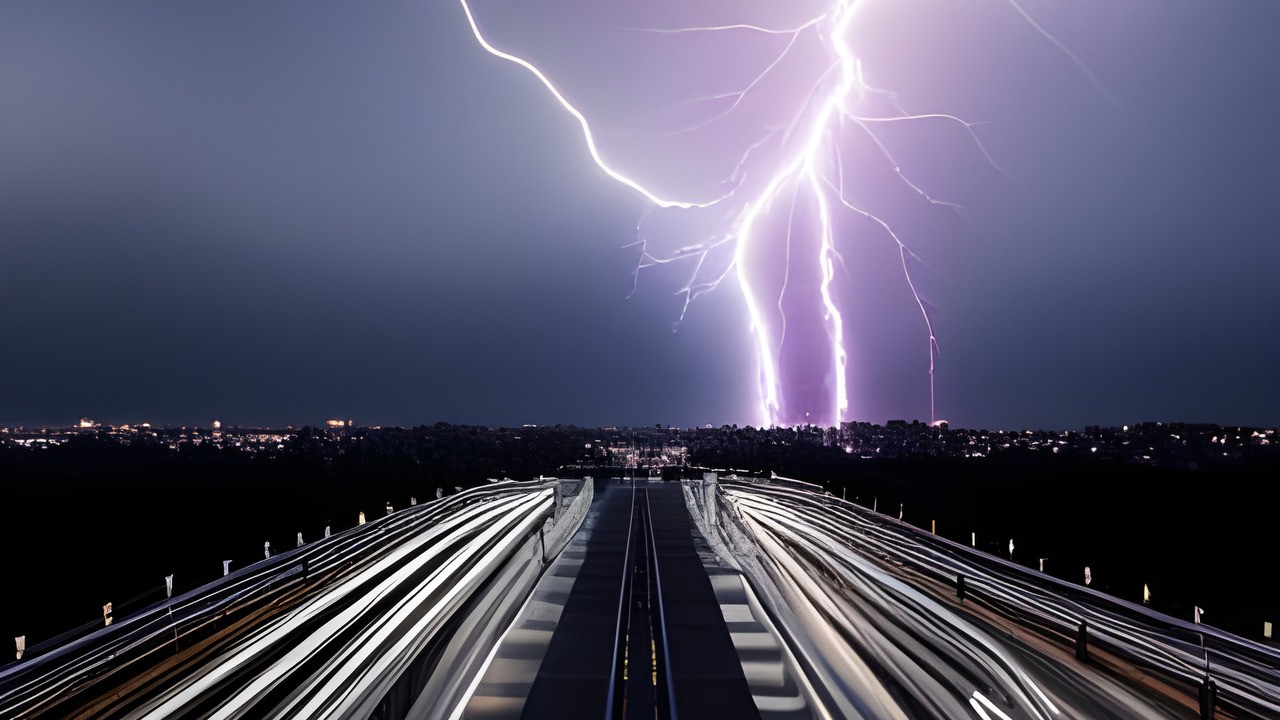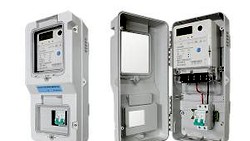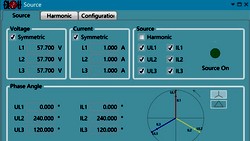Lightning strikes occur all around the world, so every region has potential risk, but certain areas are known to experience more frequent and intense lightning activity than others. Some of the most frequently struck locations globally include parts of Africa, South America, India, Southeast Asia, and the central United States.
These regions often have ideal meteorological conditions conducive to thunderstorm development, including warm temperatures and strong solar radiation, which can drive moist air into convection currents capable of lifting negative charges higher in the atmosphere. This allows positive charges below to attract them, creating powerful discharges of electricity known as lightning.
In this article, we explore the effects of lightning strikes on both transmission- and distribution lines, providing a detailed examination of their respective vulnerabilities, protective measures, and potential consequences.
Lightning Basics
In the storm clouds, intense up-drafts cause ice particles to collide and create an electrical charge separation, with positive charges accumulating at the top and negative charges congregating at the bottom.
As this charge separation intensifies, it eventually reaches a point where the insulating capacity of the air breaks down, leading to a rapid discharge of electricity in the form of lightning. The energy carried by a single lightning bolt is immense, averaging around 1 GV (Gigavolt) with a typical current from 10,000 to 30,000 amperes (A). The heat produced can also be substantial, reaching temperatures five times hotter than the surface of the sun.
Lightning Strikes on Transmission Lines
Transmission lines, which carry high-voltage electricity over long distances, are more prone to lightning strikes due to their height and exposure. When a lightning bolt directly hits a transmission line, the following events may occur:
- Line Overvoltages
Lightning strikes can cause transient overvoltages on the transmission lines. These overvoltages can exceed the insulation capabilities of the equipment, leading to insulation breakdown, flashovers, and insulation damage. It puts stress on protective devices and can result in equipment failure. - Power System Transients
Lightning strikes generate fast transient currents that propagate through the transmission lines. These transients can introduce high-frequency harmonics and voltage spikes into the power system. They can disrupt sensitive equipment, leading to malfunctions, faults, or even tripping of protective devices. - Transformer and Substation Damage
Lightning strikes on transmission lines can induce high currents and voltages in nearby transformers and substations. These induced currents can cause insulation failures, damage winding insulation, and result in transformer faults or total failure. Equipment in substations like circuit breakers, insulators, and capacitors are also vulnerable to damage. - Grid Disruptions
The sudden discharge of lightning energy can cause temporary disruptions in the grid due to line tripping, automatic reclosing, or protection system operations. These interruptions can cause power outages, affecting industries, businesses, and households. - Communication Systems
Lightning strikes can induce high electromagnetic fields that can affect communication systems operating in proximity to transmission lines. These electromagnetic interferences can disrupt telecommunication networks, control signals, and data transmission, affecting grid monitoring and control operations. - Safety Hazards
Lightning strikes pose safety risks to maintenance personnel working on or near transmission lines. It is crucial to implement safety protocols to protect workers during thunderstorm events.

(symbol Image, Credit CLOU)
Lightning Strikes on Distribution Lines
Lightning strikes on distribution lines can have several impacts on the electrical system and its various components.
- Equipment Damage
Lightning strikes can cause direct damage to distribution line components such as poles, conductors, insulators, and transformers. The intense heat and mechanical stress generated by the strike can lead to conductor melting, pole splintering, insulator shattering, and transformer failure. This damage can result in power outages and require repair or replacement of the affected equipment. - Overvoltages and Surges
Lightning strikes induce transient overvoltages and surges in distribution lines. These overvoltages can exceed the equipment's insulation capabilities, leading to insulation breakdown and damaging connected devices. Overvoltages can also result in the tripping of protective devices and disruption of power supply to consumers. - Power Quality Issues
Lightning strikes can cause flickering, voltage sags, and momentary interruptions in the power supply to consumers. These fluctuations can be disruptive to sensitive devices and can result in data loss, equipment malfunction, or disruption of critical processes. - Grounding Issues
Lightning strikes can affect the grounding system of distribution lines. The high currents induced during a strike may introduce unexpected ground potential rises and voltage differences between different parts of the distribution system. Improper grounding can endanger personnel safety and lead to electrical hazards or equipment damage. - Fire Hazards
In extreme cases, lightning strikes on distribution lines can start fires. The high temperatures generated by the strike, along with ignitable materials nearby, can trigger vegetation fires or cause structural damage to buildings, posing risks to public safety and further disrupting the power supply.
Recovery and Restoration
Once a lightning strike event has occurred, power utilities initiate recovery and restoration procedures. These include:
- Damage Assessment
After a lightning strike, the first step is to assess the extent of damage caused to the distribution lines, including poles, conductors, transformers, and other equipment. This assessment helps prioritize repair and restoration efforts. - Isolation and Safety Measures
The damaged section of the distribution line needs to be isolated to prevent further damage and ensure the safety of personnel. This may involve opening switches, sectionalizing the affected area, and ensuring proper grounding. - Equipment Repair or Replacement
The damaged distribution line components, such as conductors, insulators, transformers, and protective devices, are repaired or replaced as needed. This includes replacing broken poles, repairing or splicing damaged conductors, replacing failed insulators, and repairing or replacing damaged transformers. - Power Restoration
Once the damaged components are repaired or replaced, efforts are made to restore power to the affected areas. This involves re-energizing the distribution line, closing switches and breakers, and ensuring a stable power supply. - Testing and Quality Checks
After power restoration, thorough testing and quality checks are performed to ensure the distribution system is operating correctly. This includes checking voltage levels, evaluating power quality, and verifying that all protective devices are functioning properly. - Customer Reconnection
Finally, customers in the affected areas are gradually brought back online. This can involve synchronized reconnection to minimize stress on the system and prevent further disruptions. Utility crews coordinate with customers to safely restore power and address any individual concerns or issues.
Protective Measures
To protect power grids against the impact of lightning strikes on power lines, several protective measures can be implemented. Here are a few commonly used methods:
- Lightning Arresters
Installing lightning arresters (also known as surge arresters) at regular intervals along the power lines can divert lightning surges and prevent them from damaging the lines or associated equipment. These devices provide a low-resistance path for the lightning current to follow, directing it safely to the ground. - Grounding and Bonding
Proper grounding of power lines and equipment helps to dissipate the electrical energy caused by lightning strikes. Grounding provides a safe path for the lightning current to follow, minimizing the risk of damage. Additionally, proper bonding between different components of the system ensures equalization of potentials, reducing the chances of equipment damage. - Shielding and Insulation
Utilizing shielding and insulation techniques for power lines and associated equipment can minimize the effects of lightning strikes. Shielding involves encasing conductors in grounded metallic shields or using conductive cables that can divert lightning energy away from critical components. Insulation provides an extra protective layer by preventing direct contact of lightning with the conductive parts of the equipment. - Vegetation Management
Vegetation management near distribution lines is crucial to ensure reliable and uninterrupted power supply. Overgrown trees, shrubs, and vegetation close to distribution lines pose a significant risk of contact with the conductors, increasing the likelihood of outages, equipment damage, and potential fire hazards. Regular trimming and clearance of vegetation near the lines help maintain a safe distance, reducing the chances of vegetation-induced faults. - Lightning Detection and Monitoring Systems
Implementing lightning detection and monitoring systems can help in predicting and tracking lightning activity. This information can be used to proactively shut down or isolate vulnerable sections of the power grid before lightning strikes occur, reducing the risk of damage. - Regular Maintenance and Inspections
Conducting regular maintenance and inspections of power lines, towers, and equipment is crucial to identify any weaknesses or potential vulnerabilities. Timely repair or replacement of damaged or outdated components can reinforce the integrity of the power grid and enhance its resilience against lightning strikes.
Takeaway
Lightning strikes can have significant impacts on both transmission and distribution lines. While transmission lines are more susceptible to direct strikes and associated overvoltage transients, distribution lines are more prone to flashovers and equipment damage. However, both types of lines are equipped with protective measures to mitigate the effects of lightning strikes and restore power supply efficiently.
Continuous research and development of lightning protection systems contribute to improving the resilience of power grids against these natural events. For inquiries regarding the protection of our energy meters and medium-voltage distribution networks, we encourage you to reach out to our team of specialists.
Editor's note: This article was originally published in July 2023 and has been updated for comprehensiveness.





Can a surge from lightening affect a meter reading, can it affect a local transformer and cause a power surge that affects a meter reading?
Thank you for your question, Peter. Meters that are type tested according to IEC62052-11 undergo testing to ensure they can withstand surges and that their power/energy registers are not affected. The overall power distribution system has surge protection measures in place to protect the transformers and other equipment from voltage surges. These measures include the use of surge arresters or surge protection devices at strategic locations within the distribution network. Some utilities add additional arresters close to the meter, especially with installations on the countryside. IMHO, these additional protection is more for safeguarding the meter and home appliances themselves. It's likely impossible that a surge manipulates a register. It will rather cause collateral damage to all electrical devices and wiring, when it hits the line too close to the house installation.